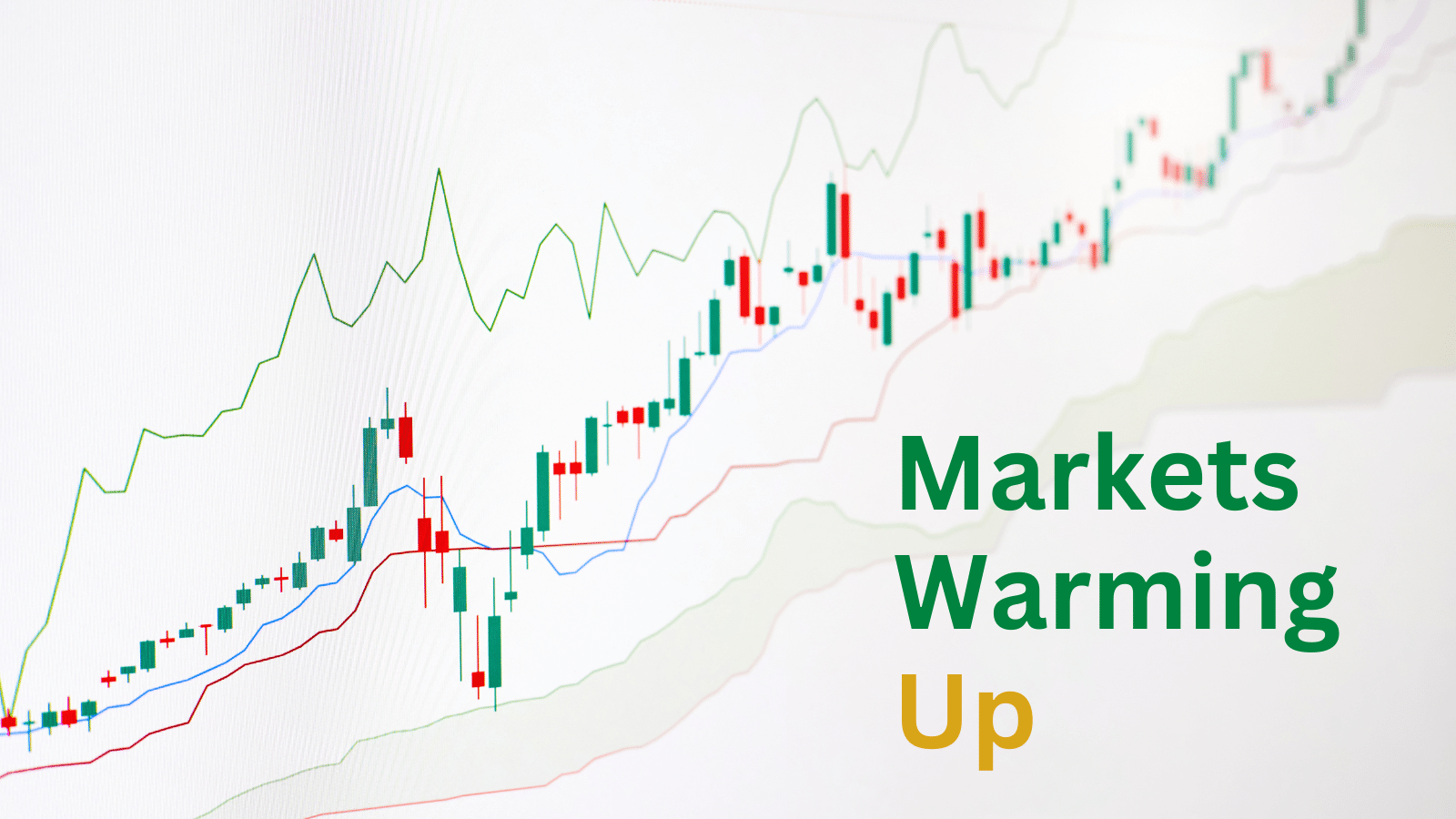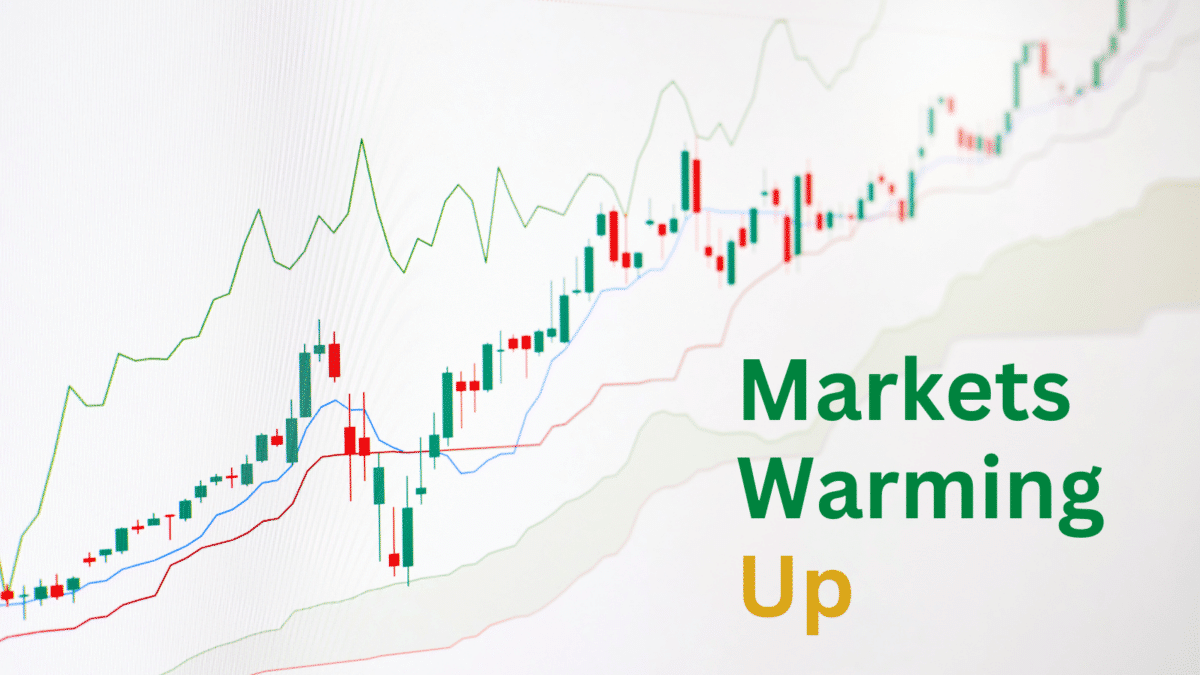
As spring approaches, the weather is starting to warm up. For the stock market, the temperature has been rising for a while now. In fact, since December 2023, the S&P 500 has not experienced a pullback of even 2%. Strong starts to years tend to signal more gains ahead, so this calm market may not precede a storm. In fact, when the S&P 500 has been up in January and February, it has gained an average of 11% over the rest of the year and has been higher in 26 out of 28 cases.
Here’s some more good news. The market’s process of adjusting to fewer interest rate cuts from the Federal Reserve (Fed) could be mostly over, with the Fed and the bond market generally aligned on the path of rates. Some upward pressure on yields is possible as this debate evolves and some components of inflation remain sticky, but with rate cuts forthcoming, there is a limit to how much higher rates will go. Stable interest rates can help support lofty stock valuations and reverse early-year losses in the bond market.
An excellent fourth quarter earnings season provides additional support for stock valuations. The mega cap technology companies were the stars of the show, as the biggest six technology companies drove more than nine points of S&P 500 earnings per share growth in the quarter by themselves – turning a 4.5% decline into a nearly 5% earnings increase. That’s doing some heavy lifting. Prospects for high-single-digit earnings growth for the S&P 500 in the year ahead have brightened, though gains will be dependent on the U.S. economy achieving a soft landing. In the absence of recession, stocks have a strong track record of gains.
Against the odds, the Fed may have threaded the needle. Government spending has helped, enabling the economy to sustain itself late in its cycle. We’ll be watching the economic data, credit markets, and various measures of investor sentiment for signs of deterioration. A broadening out to the “S&P 493” would be welcomed. Pairing technical analysis with fundamentals will be especially important.
History does suggest volatility may pick up after such a strong and steady advance. Although the S&P 500 has returned over 11% annualized since 1980, on average, the index typically experiences one 10% correction per year and three 5% to 10% pullbacks. A divisive presidential election now just eight months away could bring more volatility, as could geopolitical tensions or weakness in the mega-cap technology stocks.
Here’s hoping for a warm — but not too hot — spring for the economy and markets, keeping Fed rate cuts in play while providing a solid foundation for corporate America to grow earnings.
As always, please reach out to me with questions.
Ready to start investing today?
Important Disclosures:
This material is for general information only and is not intended to provide specific advice or recommendations for any individual. There is no assurance that the views or strategies discussed are suitable for all investors or will yield positive outcomes. Investing involves risks including possible loss of principal. Any economic forecasts set forth may not develop as predicted and are subject to change.
References to markets, asset classes, and sectors are generally regarding the corresponding market index. Indexes are unmanaged statistical composites and cannot be invested into directly. Index performance is not indicative of the performance of any investment and do not reflect fees, expenses, or sales charges. All performance referenced is historical and is no guarantee of future results.
All data is provided as of March 6, 2024.
Any company names noted herein are for educational purposes only and not an indication of trading intent or a solicitation of their products or services. LPL Financial doesn’t provide research on individual equities.
All index data from FactSet.
The Standard & Poor’s 500 Index (S&P500) is a capitalization-weighted index of 500 stocks designed to measure performance of the broad domestic economy through changes in the aggregate market value of 500 stocks representing all major industries.
This Research material was prepared by LPL Financial, LLC. All information is believed to be from reliable sources; however, LPL Financial makes no representation as to its completeness or accuracy.
Bonds are subject to market and interest rate risk if sold prior to maturity. Bond values will decline as interest rates rise and bonds are subject to availability and change in price.
There is no guarantee that a diversified portfolio will enhance overall returns or outperform a non-diversified portfolio. Diversification does not protect against market risk.
Past performance does not guarantee future results.
Asset allocation does not ensure a profit or protect against a loss.
Tracking #550235


